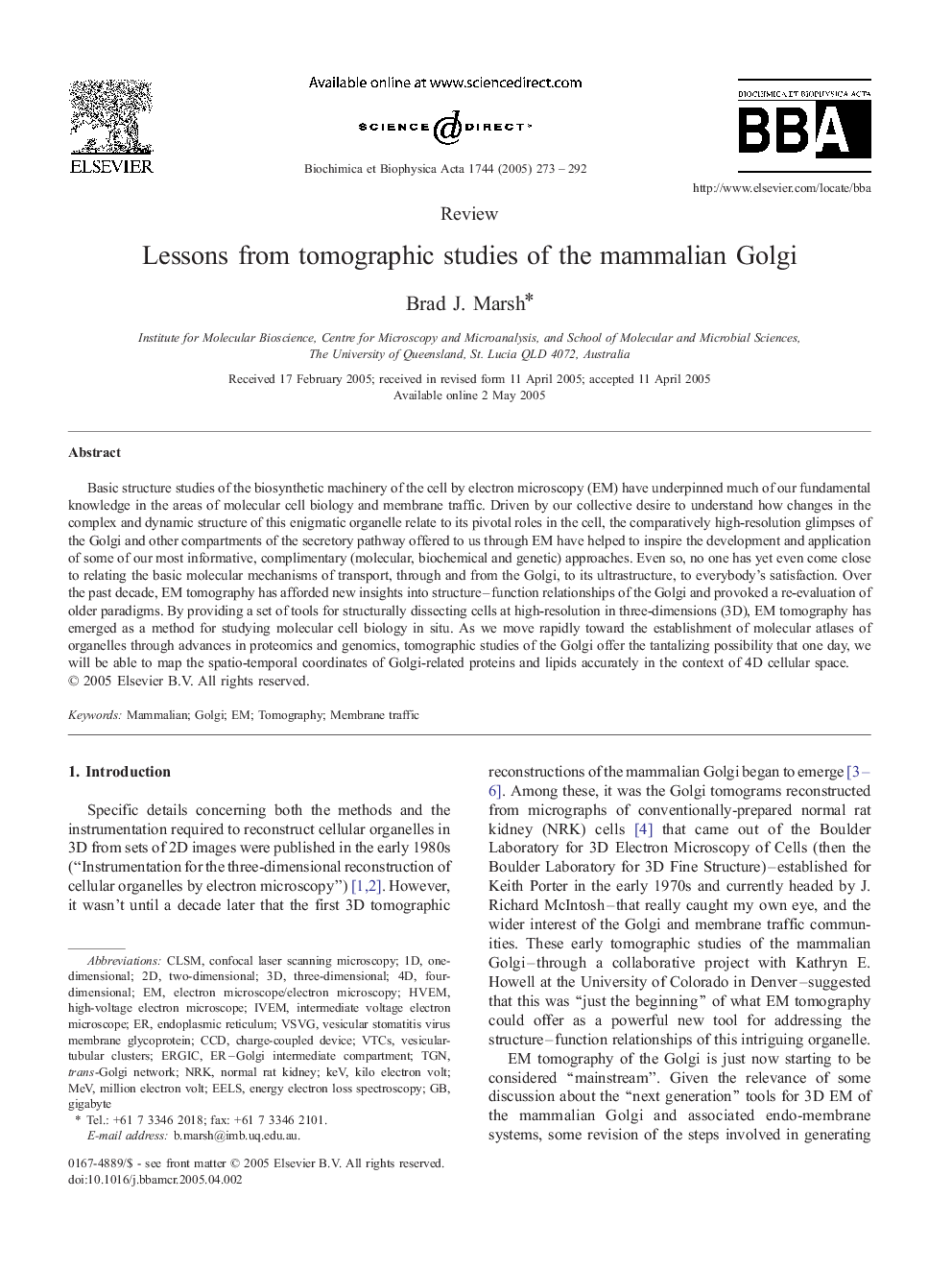| Article ID | Journal | Published Year | Pages | File Type |
|---|---|---|---|---|
| 10803156 | Biochimica et Biophysica Acta (BBA) - Molecular Cell Research | 2005 | 20 Pages |
Abstract
Basic structure studies of the biosynthetic machinery of the cell by electron microscopy (EM) have underpinned much of our fundamental knowledge in the areas of molecular cell biology and membrane traffic. Driven by our collective desire to understand how changes in the complex and dynamic structure of this enigmatic organelle relate to its pivotal roles in the cell, the comparatively high-resolution glimpses of the Golgi and other compartments of the secretory pathway offered to us through EM have helped to inspire the development and application of some of our most informative, complimentary (molecular, biochemical and genetic) approaches. Even so, no one has yet even come close to relating the basic molecular mechanisms of transport, through and from the Golgi, to its ultrastructure, to everybody's satisfaction. Over the past decade, EM tomography has afforded new insights into structure-function relationships of the Golgi and provoked a re-evaluation of older paradigms. By providing a set of tools for structurally dissecting cells at high-resolution in three-dimensions (3D), EM tomography has emerged as a method for studying molecular cell biology in situ. As we move rapidly toward the establishment of molecular atlases of organelles through advances in proteomics and genomics, tomographic studies of the Golgi offer the tantalizing possibility that one day, we will be able to map the spatio-temporal coordinates of Golgi-related proteins and lipids accurately in the context of 4D cellular space.
Keywords
Related Topics
Life Sciences
Biochemistry, Genetics and Molecular Biology
Biochemistry
Authors
Brad J. Marsh,
